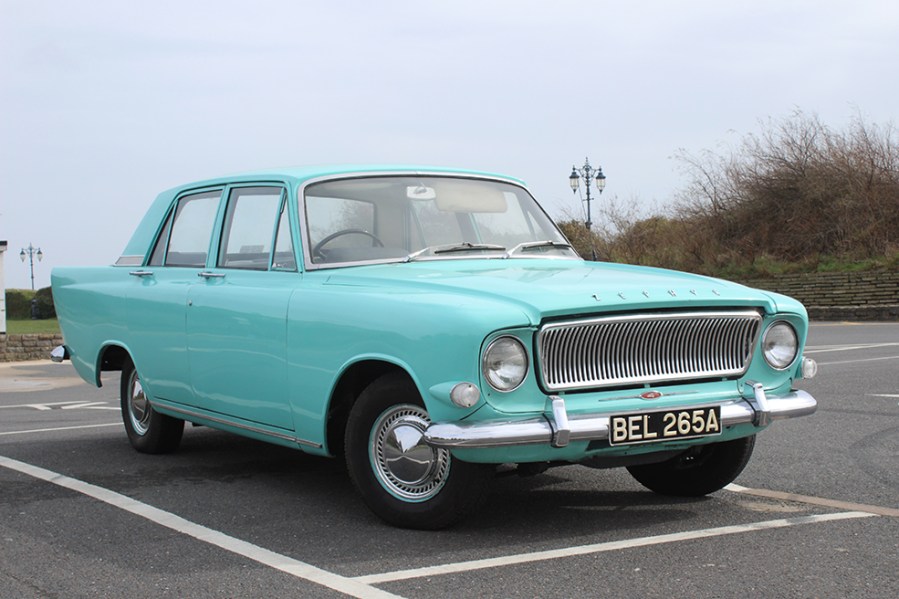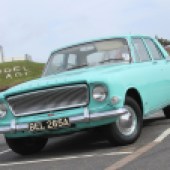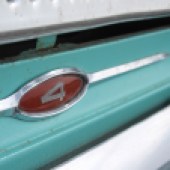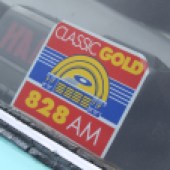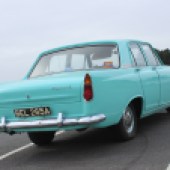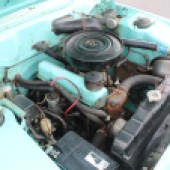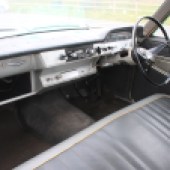Comfortable, easy to drive and with plenty of style, the Mk3 Zephyr makes for a fun classic today. We sample 1962 Zephyr 4 to see how it stacks up
Words: Jack Grover
Ford of Britain rearranged its model range for the 1960s. Previously its ‘big Ford’ range had consisted of the four-cylinder Consul, the six-cylinder Zephyr and the plusher and more powerful Zodiac. Now Dagenham was looking to fill out its range offerings with models sized between the small Anglia and the big ‘Z-cars’, and decided that the Consul name would be used to do so. The initial offering of the Consul Classic and Consul Capri were a bit of a marketing misfire, but the Consul Cortina really hit the spot and the executive-orientated Consul Corsair didn’t do badly either. But that meant that when the time came for the third generation of the big Fords the Consul name was absent.
The old 1.7-litre OHV four-pot from the Consul remained, but in what was now called the Zephyr 4, as opposed to the Zephyr 6. The Mk3 Z-cars were correspondingly larger cars than what had come before, and with their broad bonnets, wide grilles, bench seats and out-turned tailfins offered a lot of metal, plus a huge amount of cabin and boot space, for the money.
This was especially the case for the relatively basic Zephyr 4, which was distinguished from its six-cylinder sibling by having a much smaller and simpler chrome grille, no trim around the headlamps and some rather obvious bonnet and panel gaps at the front, giving it a somewhat ‘unfinished’ appearance. The frontal appearance was tidied up a bit a few years into production, and at the same time the ‘Zephyr’ lettering moved from the bonnet to the grille panel and the ‘4’ badge underneath was deleted – on this early Mk3 both are still present in the original form.
Little is known about this particular example’s history, but it has not wandered far in its life – now for sale in Portsmouth at Trojan Cars, it was originally sold on the other side of the New Forest in Dorset and wears a Bournemouth-issued registration (on very nice original white-on-black raised-letter plates). The last owner acquired the car in 1996, by which time it had covered just under 88,000 miles, but it was placed in dry storage without being used. Last summer the car was recommissioned with various parts such as new clutch hydraulics, overhauled brakes, new cooling hoses and a fresh battery, as well as renewed fluids and filters, to be used lightly but regularly to go to classic car events in the Dorset and Hampshire area.
The bodywork is generally straight, original and unmolested but by no means pristine. The turquoise paintwork is smart and eye-catching at a distance, and retains an even and glossy shine close-up. The chrome bumpers, grille, hubcaps and lamp units are all in excellent condition, although the rear bumper is bent at its mid-point. Close examination shows that there are freckles of rust around the lower grille, behind the front bumper and in the front valence. There are signs of repairs and filler in the bottom of both front doors.
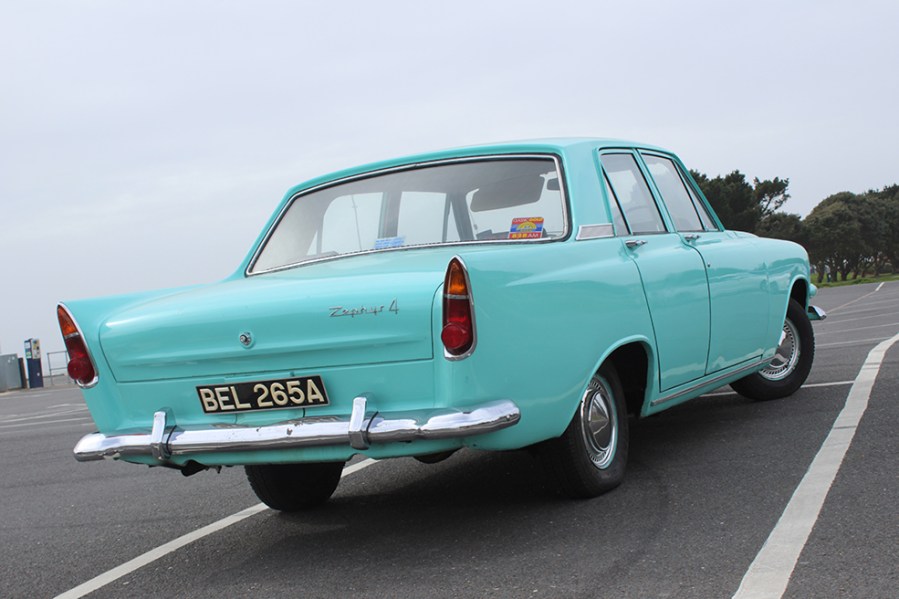
The wheel arches and sills also show some light surface rust but are solid, and none of the body seams show any lurking heavy corrosion. The front wings and bulkhead are all reassuringly solid, and their undersides have been protected by underseal and wax. The windscreen and rear window seals are badly perished but there are no signs or smells of water leaks in the interior. Footwells have been patched in the past and show fairly heavy surface rust but are still solid throughout. Minor rust flecks and cracks in the paint are also found at the rear, on the boot lid and rear valence. All the bright trim and badges are present and correct and all the doors open, close and latch smoothly, albeit with the rather hollow ‘clang’ typical of a 1960s Ford.
The cabin is wonderfully original, with the two-tone vinyl on both front and rear bench seats in excellent condition. Some of the alloy trim parts around the lower part of the dash are speckled with rust (perhaps the car’s storage was not entirely dry?) but everything is still in good or very good condition, with no missing or broken parts and no signs of water damage. The dash top is free of splits and tears and all the switchgear is present and functional. The door trims are very smart and the windows wind smoothly. The headlining is still fully in place and free of stains or tears.
There are more freckles of rust visible in the paint on the bulkhead and other parts of the engine bay but no major areas of corrosion, even on the surface. Both inner wings have clearly been repaired around the strut tops in the past, and although the welding is not the smartest it is solid and has been painted over to a decent standard. There are no signs of oil or water leaks from or around the engine, and the rubber coolant, heater, fuel and servo hoses all look to have been recently replaced. What wiring there is looks to be sound, and while some newer wires have been attached to the battery terminals (presumably to power the later radio) they have been attached properly with well crimped-on fittings.
The 1.7-litre engine starts easily and pulls well even when cold so long as it has enough choke. The four-speed column-mounted gearchange impresses with its smoothness and accuracy (Fords always seem to score well in this area), and, with full and effective synchromesh, it quickly becomes natural to slot up and down between second and third in Portsmouth traffic. The brakes, with a rebuilt servo, work well with little effort and pull evenly.
The steering is light (to the point of numbness) and smooth, which when combined with the excellent visibility provided by the big windows and slim pillars makes piloting the big Ford on narrow city streets a doddle. It has a pliant ride but it doesn’t wallow over speed bumps or roll around roundabouts. The Zephyr drives very smoothly and sits on the road well, clearly with no worn suspension or steering parts. The engine is just as sweet, pulling what is quite a big car along nicely in the lower gears. The temperature gauge sat exactly in the middle of its travel and the car always started up without fuss when hot.
The only snag was briefly getting trapped in a parking space before I could work out to engage reverse gear (it turns out you have to pull the gear lever outwards before shifting into what feels like first!).
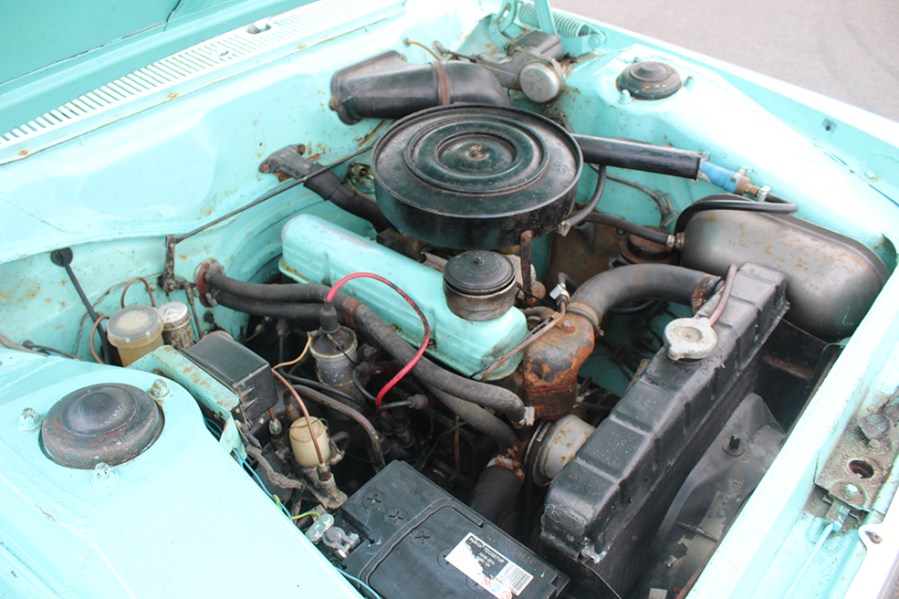
Ford Zephyr Mk3: our verdict
This Zephyr is certainly not concours, but it doesn’t carry a concours asking price. In the long term it would probably need work to the footwells and sills to remain solid, but that would be a good few years away. As of now it is a perfectly presentable and highly usable classic saloon that is easy to drive, brimming with period charm and carrying a lovely patina. All told, it could offer an affordable and enjoyable way into the classic Ford scene.
With classic Ford prices still routinely rocketing off into the stratosphere, a good example of a Zephyr Mk3 certainly offers a lot of Blue Oval for the money.

